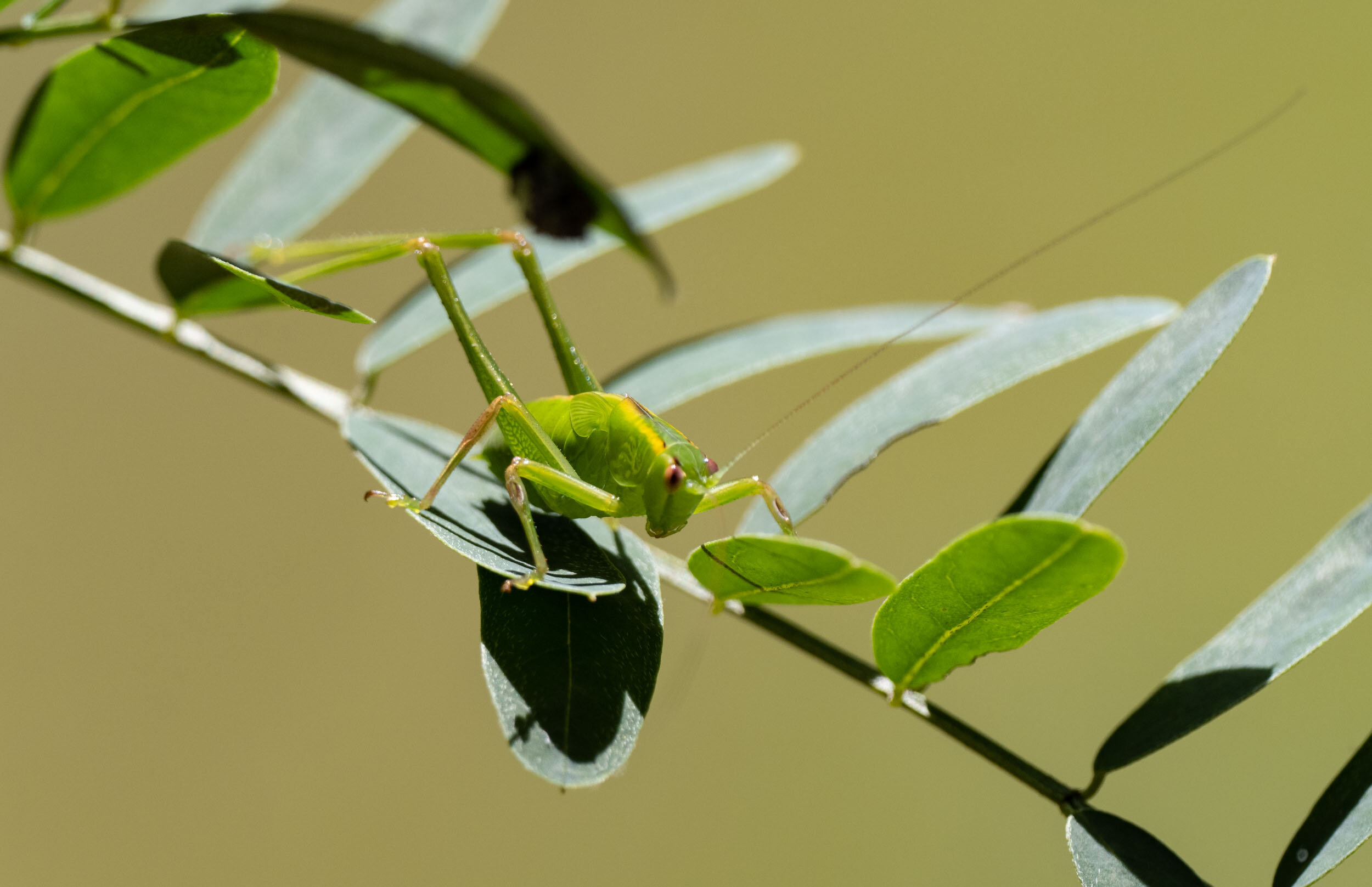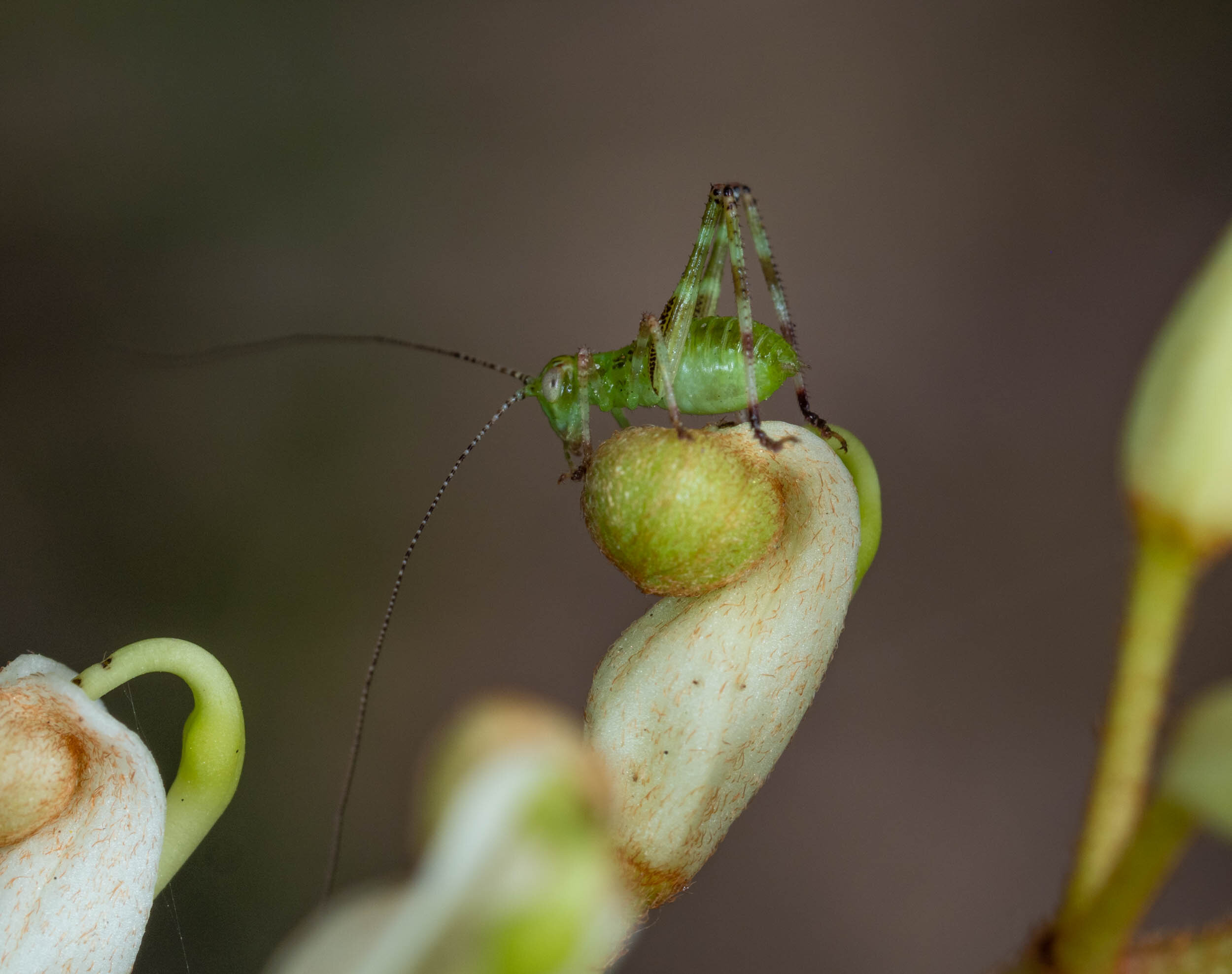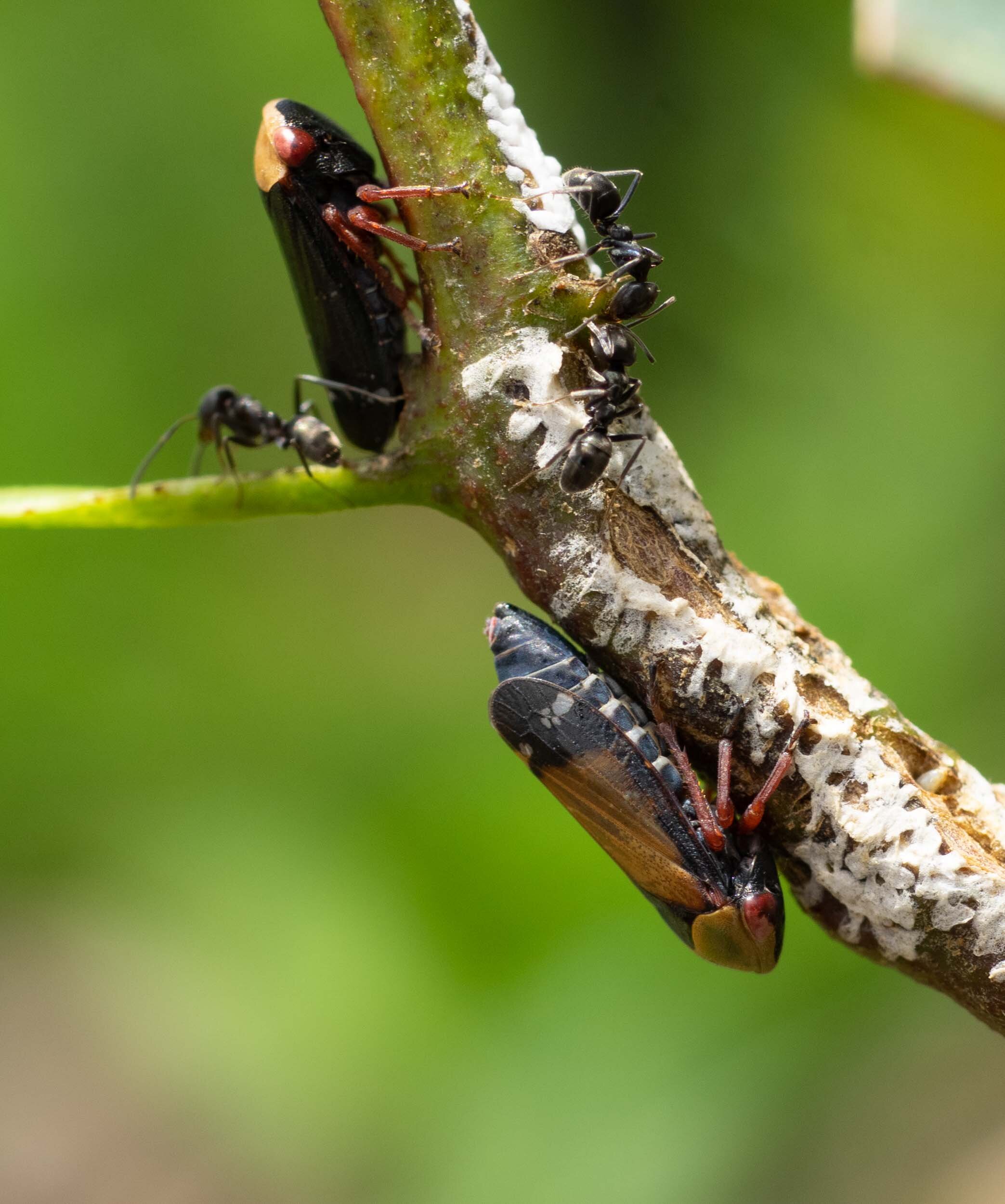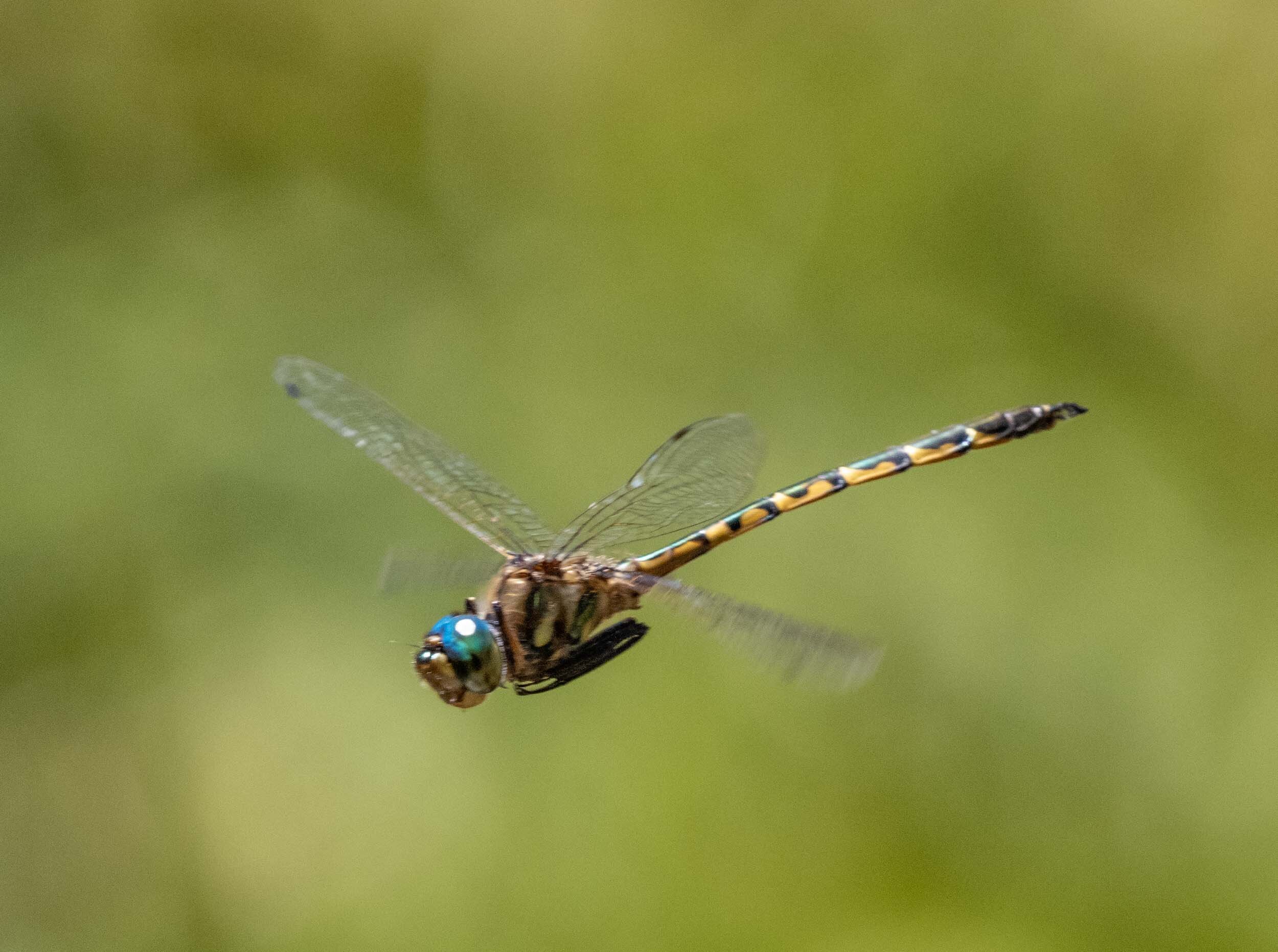
Red-browed Finches – with fledgling
Neochmia temporalis. We discovered where these guys have been hiding out - in the grove of Kangaroo Apple bushes above the river. Parents displaying a young one.

recently-fledged Sacred Kingfisher
The parent birds were successful again this year. Two young left the nest hollow in late December.
Todiramphus sanctus - juvenile

food waste disposal
Like many hunting species, kingfishers regurgitate undigestible material as a pellet. I’m guessing that this pellet includes the exoskeletons of many cicadas!
Todiramphus sanctus - juvenile

5-day old ducklings in hiding
I found our pair of Australian Wood Ducks with their clutch of 6 five-day old chicks hiding out in the undergrowth. Female with 4 of the youngsters shown here. Keep your head down junior!
Chenonetta jubata

Collared Sparrowhawk
A rather regular visitor of late, and a real threat to the various juvenile birds we’re starting to see.
Accipiter cirrocephalus (see iNaturalist record)

Long-legged Fly
A handy predator, with aphids and mosquitoes in the diet
Family: Dolichopodidae (see iNaturalist record)

massive March Fly
A rare shot on a natural substrate. These huge flies favour boots, buckets, and anything black or blue.
Triclista guttata (see iNaturalist record)

ground-nesting wasp
Cerceris (see iNaturalist record)

Competing males
Flowers continue to open on our tongue orchid, as do mating attempts by male wasps. This pair got into the act at the same time.

Antlion
A large lacewing that spent its youth as an ant predator living in a sandpit.
Glenoleon pulchellus (see iNaturalist record)

katydid nymph
perhaps the Garden Katydid, Caedicia simplex. Nymphs are always a challenge to ID.

tiny katydid nymph
This tiny nymph landed on the unopened flower of a Holly Lomatia. The opened flowers can be seen in the next image.

the long-awaited Holly Lomatia flower
Lomatia ilicifolia. Family Proteaceae. This plant only ever flowers after a fire, so this is the first (and hopefully last!) time we’ve seen its display.

tiny bee
This Bluebell (Wahlenbergia gracilis) is just 8mm wide … so the pollen-laden little bee is truly tiny.

Angophora blossom!... with Green-and-Gold Nomia bee
Of course, the bee was my target but the flowering of the Angophora is exciting! Every tree burnt a year ago. Every tree now heavy with blossom and luxuriant leaf growth.

leafhoppers
Unusual colouring and I’ve yet to find a species match.
Eurymeloides (see iNaturalist record)

leafhopper, with attendant ants
Eurymeloides bicincta (see iNaturalist record)

another leafhopper
First time I’ve spotted this species in years.
Ishidaella sp.

Leioproctus bee
A Geebung specialist, they are currently swarming about the flowering Persoonia.
Leioproctus sp.

tiny crab spider
Not much more than 10mm … counting those long front legs!
Sidymella hirsuta - male (see iNaturalist record)

Cuckoo Wasp in search of another's nest
Primeuchroeus sp. I sighted this beautiful green creature inspecting tiny holes in the bark - looking for a bee or wasp nest to deposit her eggs. Her young develop at the expense of the original occupants. See iNaturalist record.

the pattern of spore sacs identifies a new fern
Harsh Ground Fern (Hypolepis muelleri) has appeared for the first time since the fire. See iNaturalist record.

Australian Emerald
Hemicordulia australiae. A regular presence at the pond, patrolling his territory.

mating dragonflies
The “wheel” position adopted by mating dragonflies - male above, female below.
Australian Emeralds (Hemicordulia australiae) See iNaturalist record.

egg-laying damselflies
The female deposits eggs in a reed stem while the male provides support and wards off other males.
Wandering Ringtails (Austrolestes leda)

Cosmopolitan Plume Moth
Stenoptilia zophodactyla. I found these moths with their bizarre wings fluttering around in the undergrowth. See iNaturalist record.

roosting flower wasps
The seeding head of a grass is an ideal spot for a group of tiny thynnine wasps to spend the night

blue-legged grasshopper
Peakesia coeruleipes. Another new one for the forest, obligingly showing off his blue tibia to enable my identification (see iNaturalist record).

Swordgrass Brown
Tisiphone abeona. Regularly seen near the house patrolling one of its food plants, Tall Saw-Sedge (Gahnia clarkei).

the parasols of liverwort reproduction
Marchantia sp. I discovered these primitive plants with their umbrella heads bearing sex organs in the hollow left by a burnt tree stump. See iNaturalist record.






























